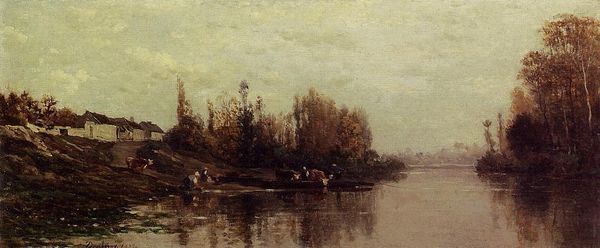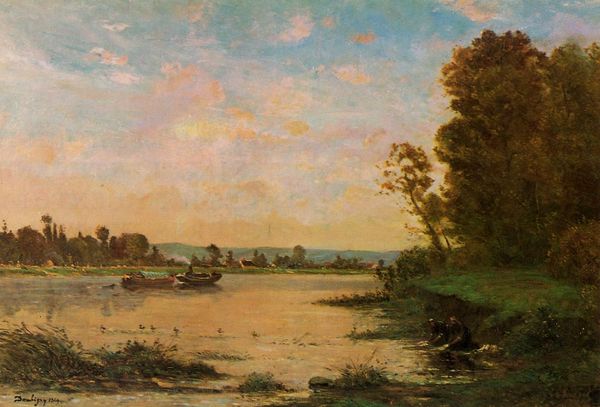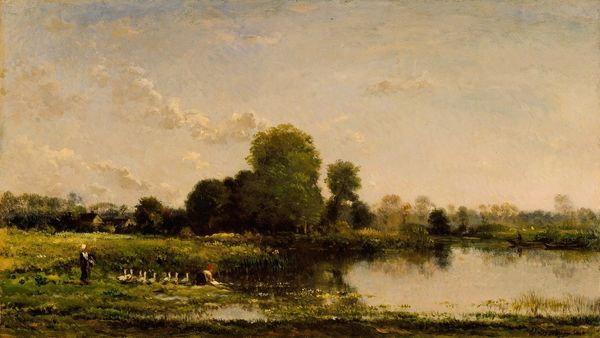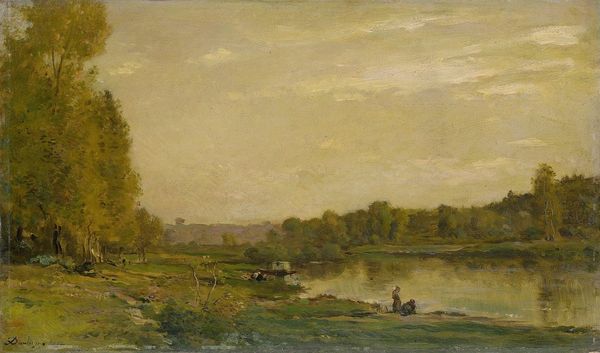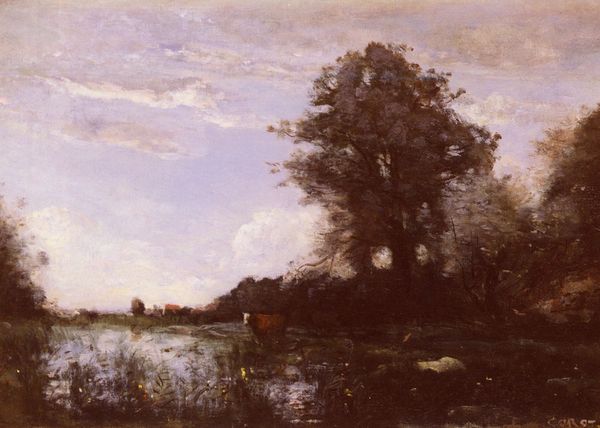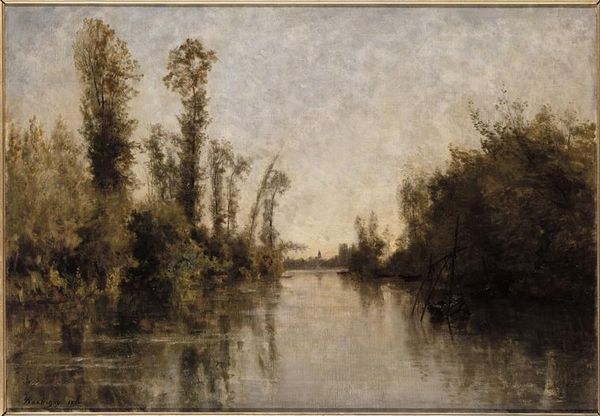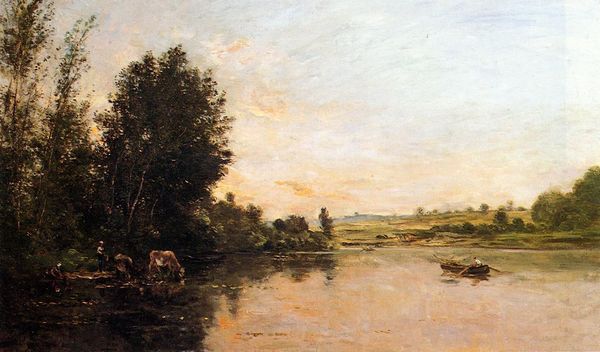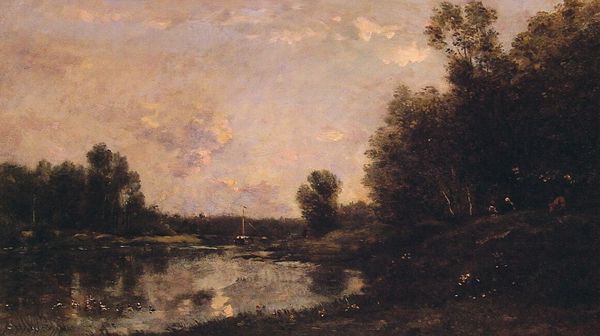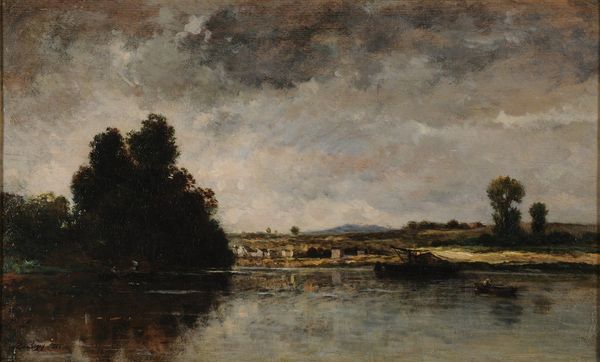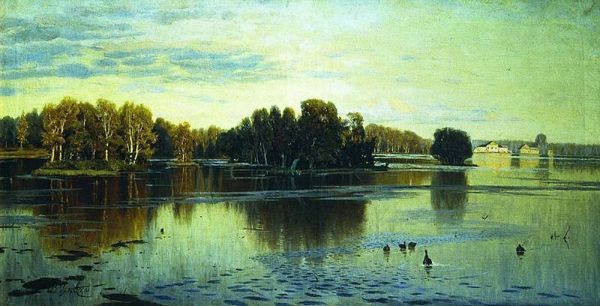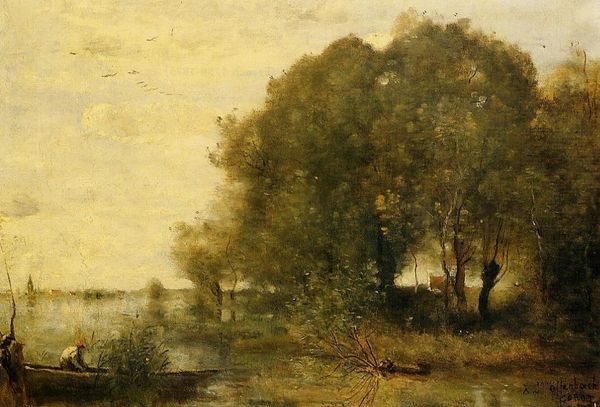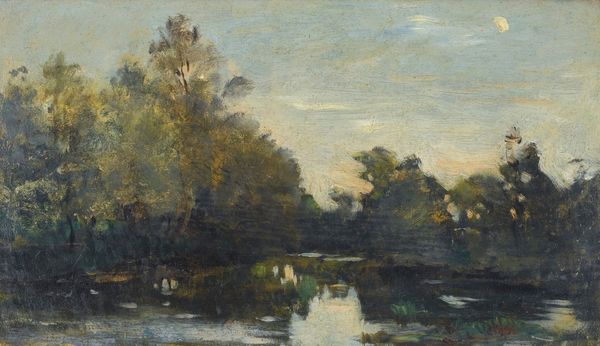
Dimensions: 38.1 x 67.31 cm
Copyright: Public domain
Editor: This is Charles-François Daubigny’s "Ducklings in a River Landscape," painted in 1874 using oil paint, done "en plein-air". I find it quite serene, with those soft colours and reflections on the water. How would you interpret this work? Curator: This piece comes at an interesting point in Daubigny's career, during the rise of Impressionism. While not strictly Impressionist himself, Daubigny was hugely influential, and this work encapsulates the shifting priorities in French painting. Consider how, traditionally, landscape painting served as background, subordinate to historical or mythological narratives. Editor: Right, landscape as a setting. Curator: Exactly! Daubigny, and others like him, elevated the landscape itself to the primary subject. Think about what this shift represents. It’s not just about depicting nature accurately, it is about celebrating the everyday. These pastoral scenes gain significance against the backdrop of rapid urbanization. What do you notice about the brushstrokes? Editor: They seem quite loose, not really focused on detail. Curator: Precisely. The sketch-like quality, achieved "en plein air", demonstrates a prioritization of capturing a fleeting moment, rather than striving for idealized perfection. What do you make of the presence of the ducklings themselves? Editor: Well, they add a bit of life to the scene, I guess. A focal point, even. Curator: More than just a focal point. They become stand-ins for a kind of idealised vision of the rural—harmonious and peaceful. A far cry from the increasingly industrialized cities that drew people away from the land. The art market also starts to favor the rise of smaller-sized artwork which suits intimate spaces, mirroring middle-class rise and increased interest in domestic art. Editor: That makes a lot of sense. I never really considered the socio-political influences when looking at landscapes like this before. It feels like there's a lot more to unpack here than I initially thought. Curator: Indeed. Understanding the context—the rise of urbanism, the evolving art market, and the search for an authentic national identity—truly enriches our appreciation of these works.
Comments
No comments
Be the first to comment and join the conversation on the ultimate creative platform.
